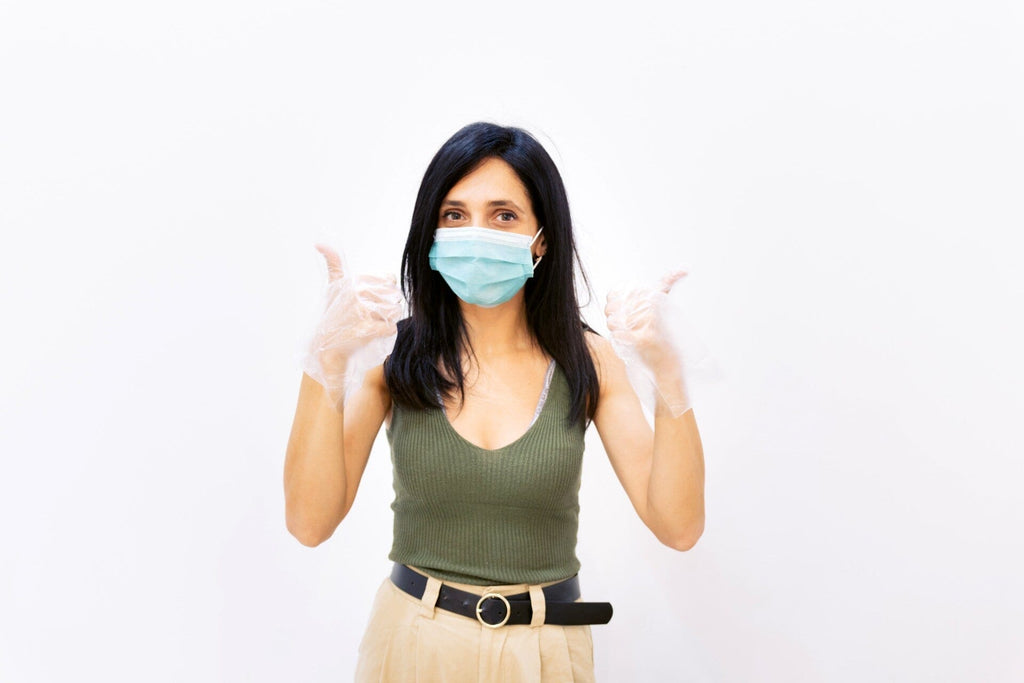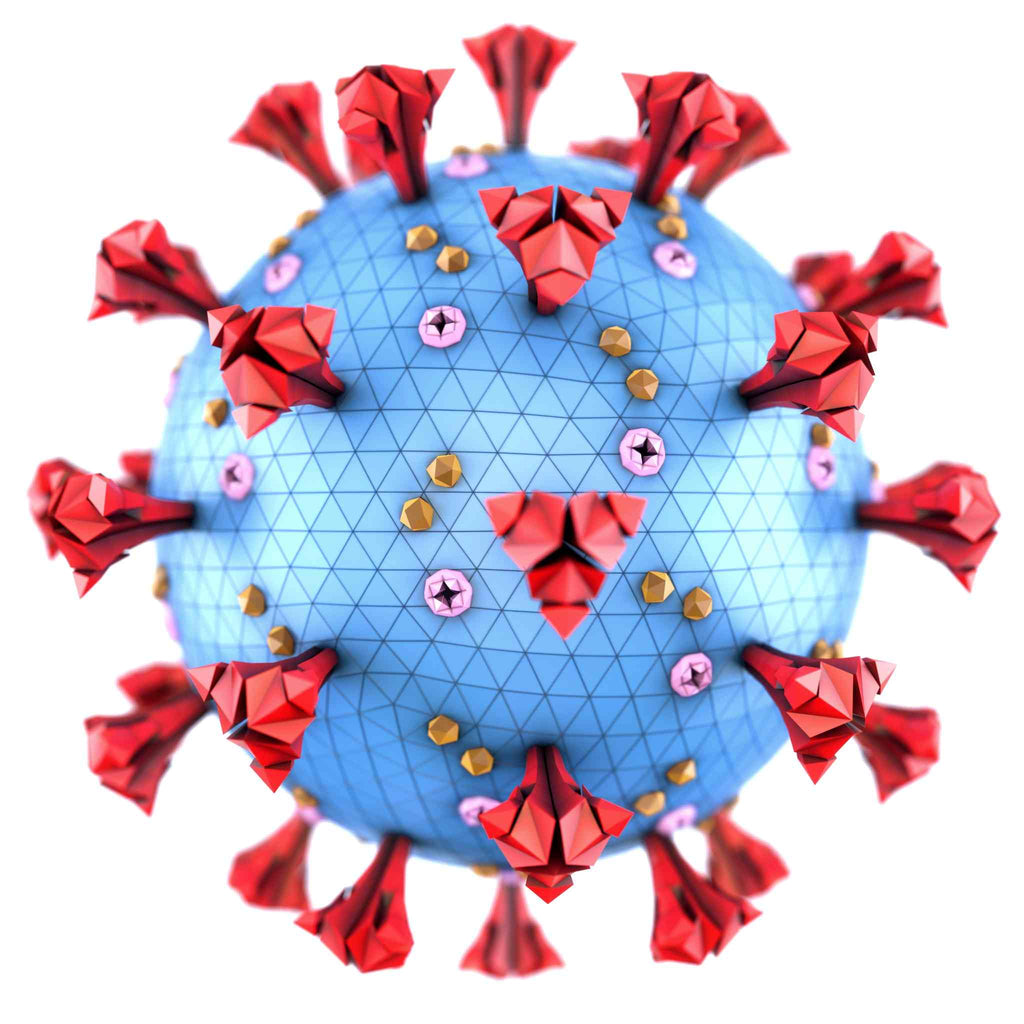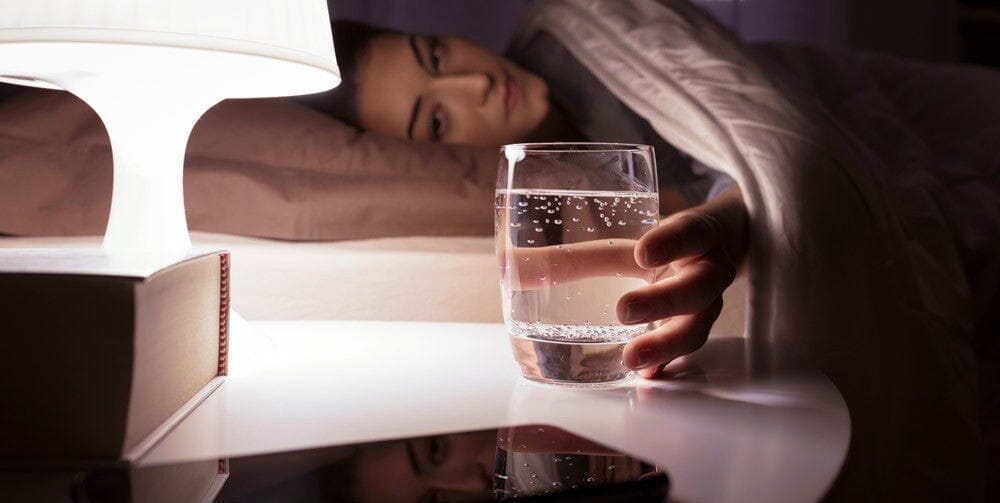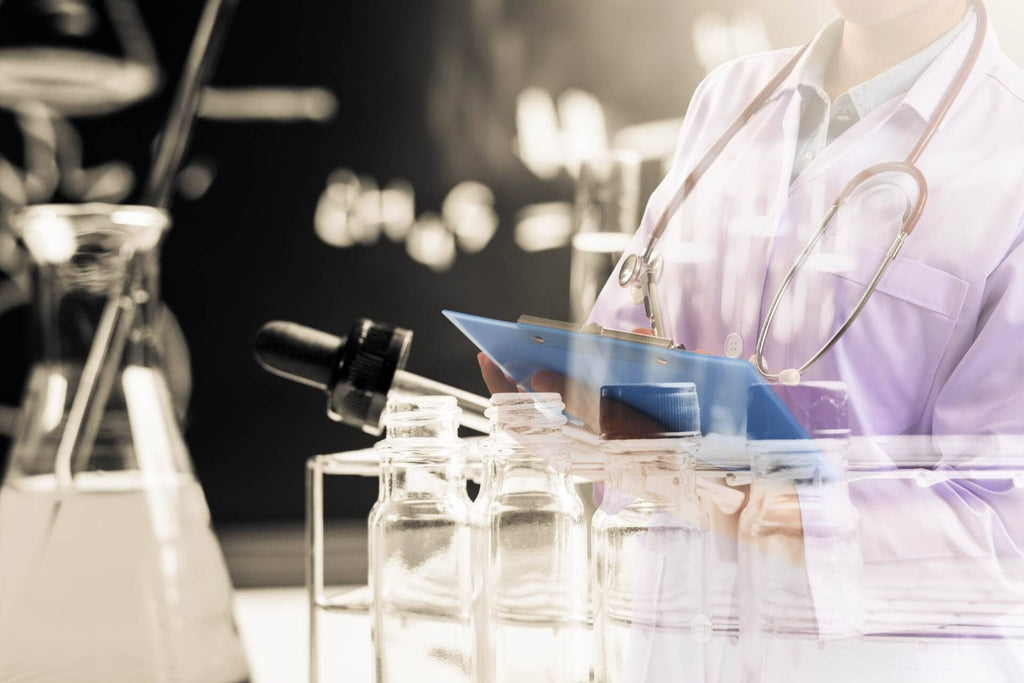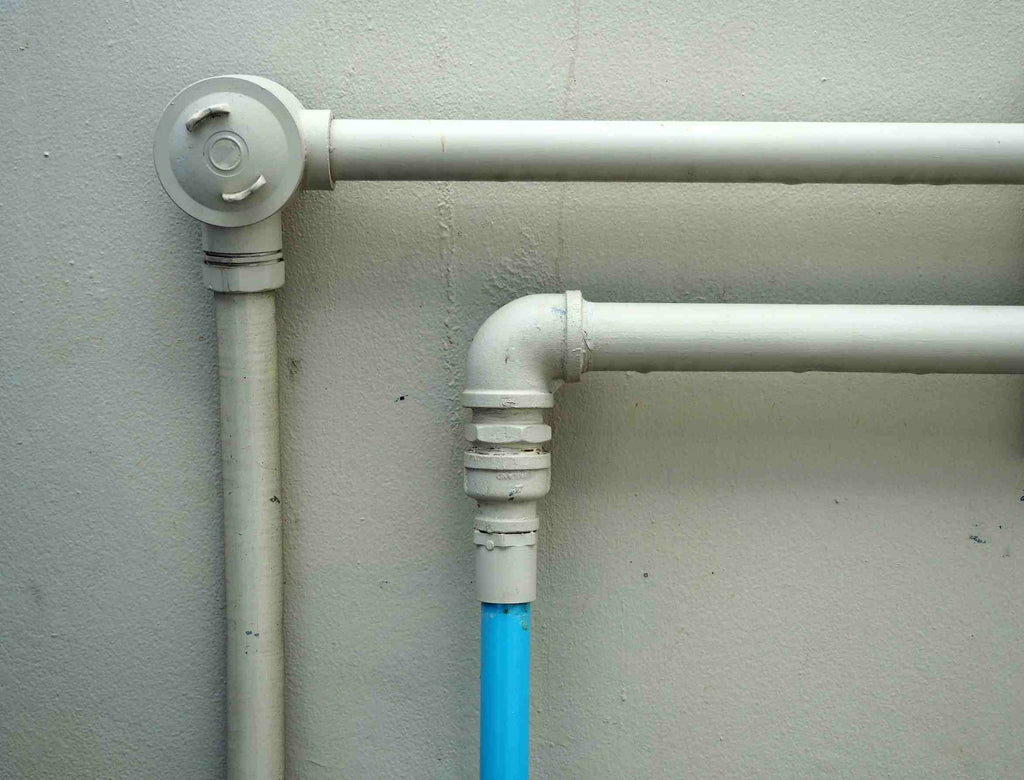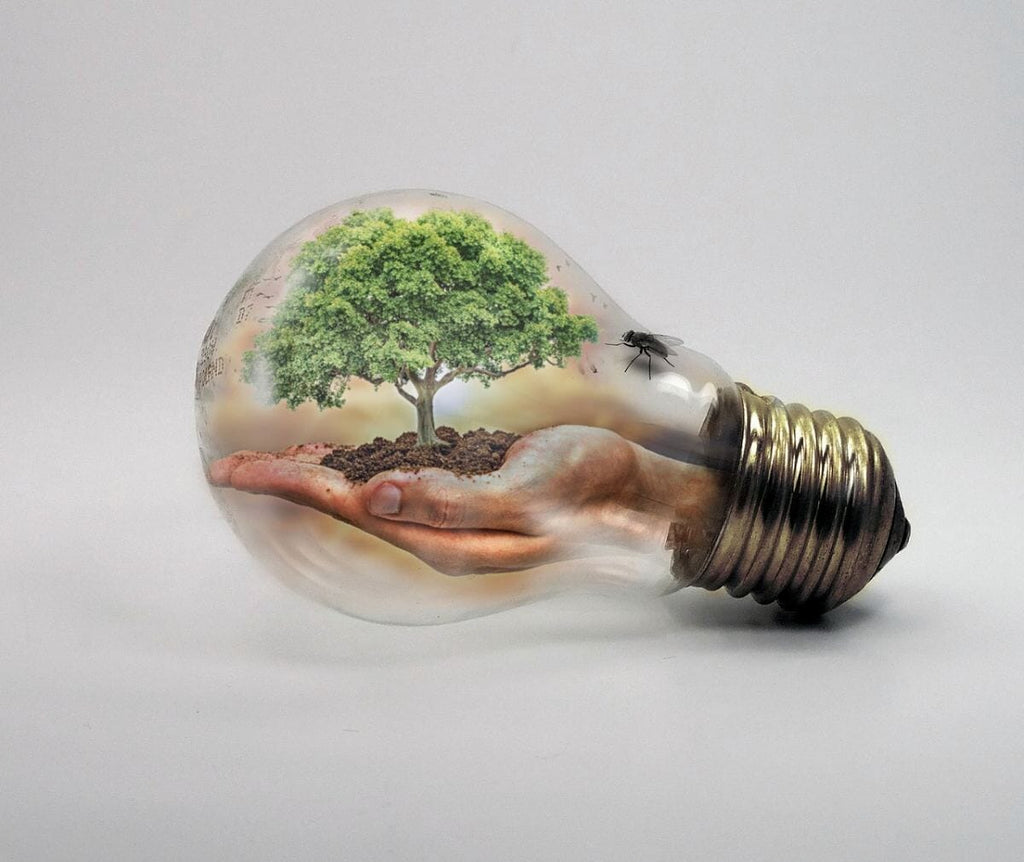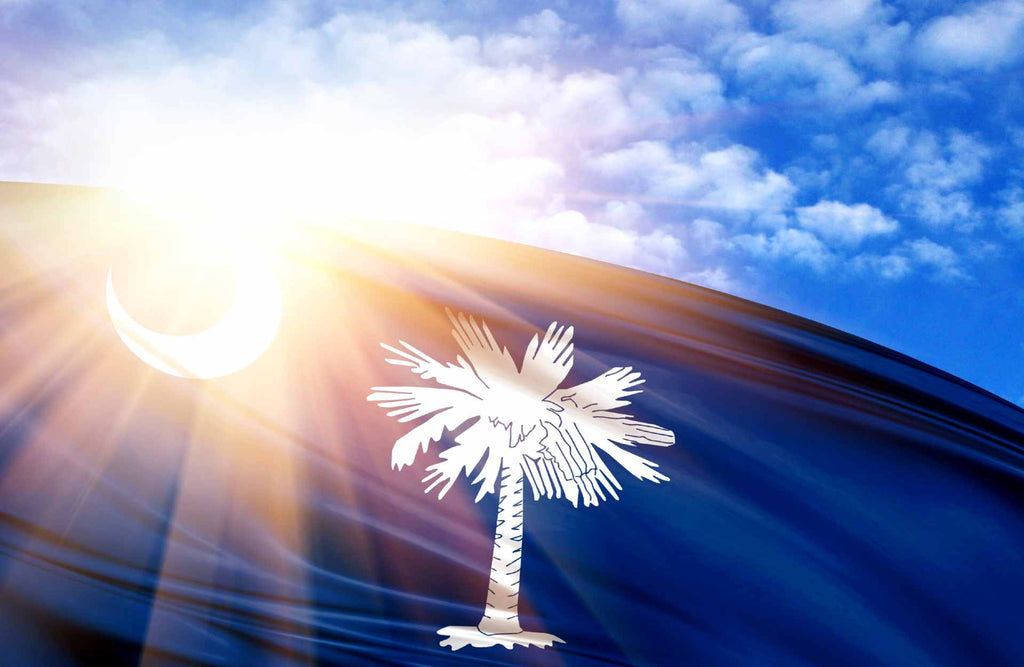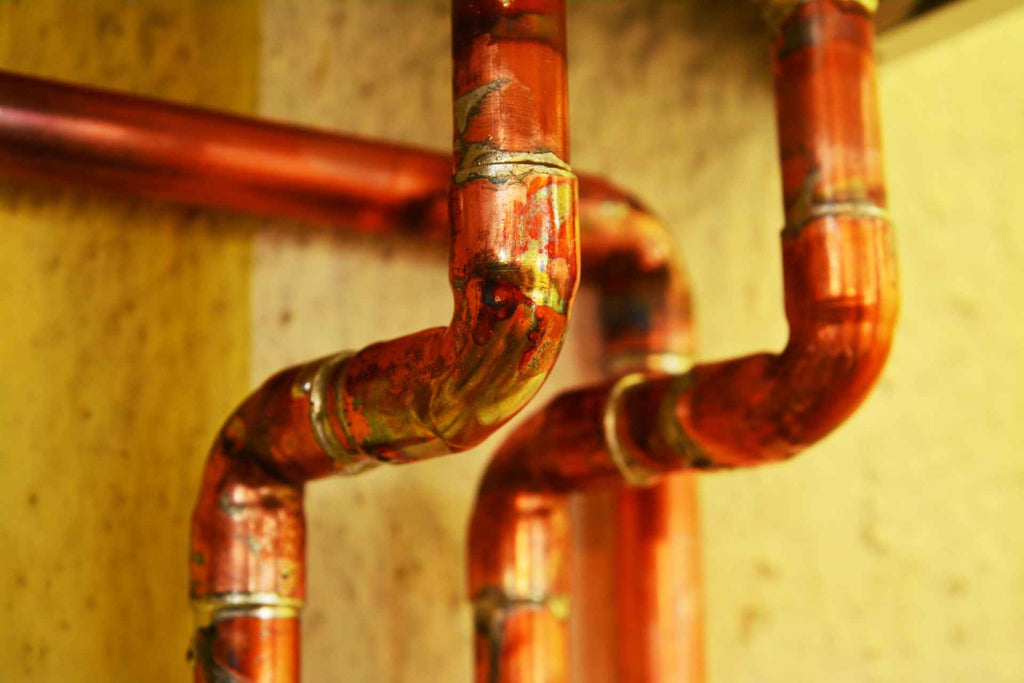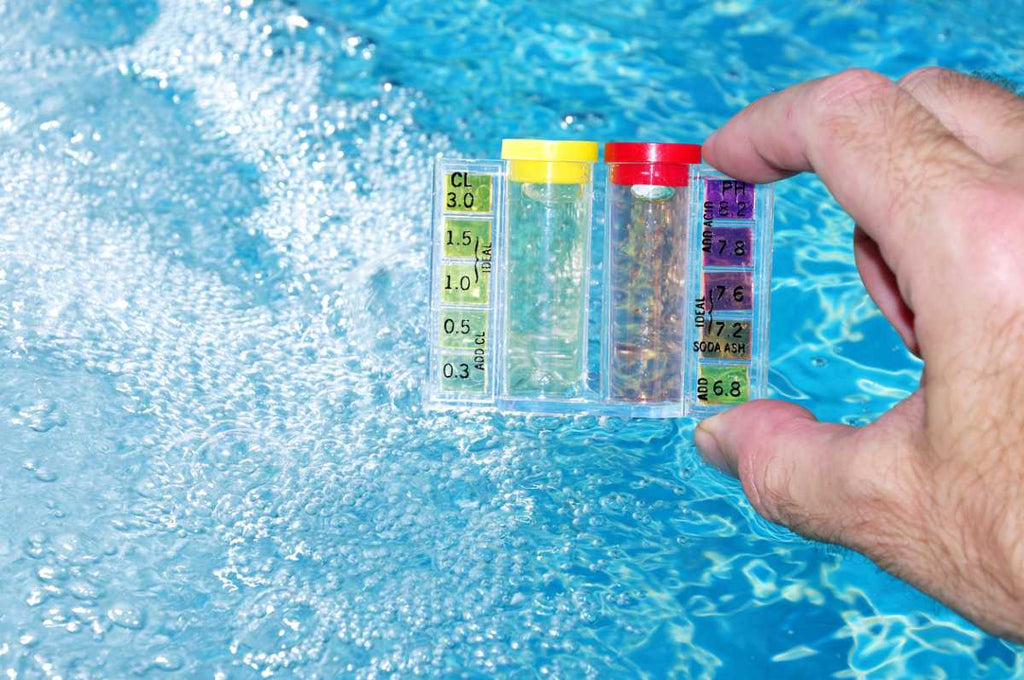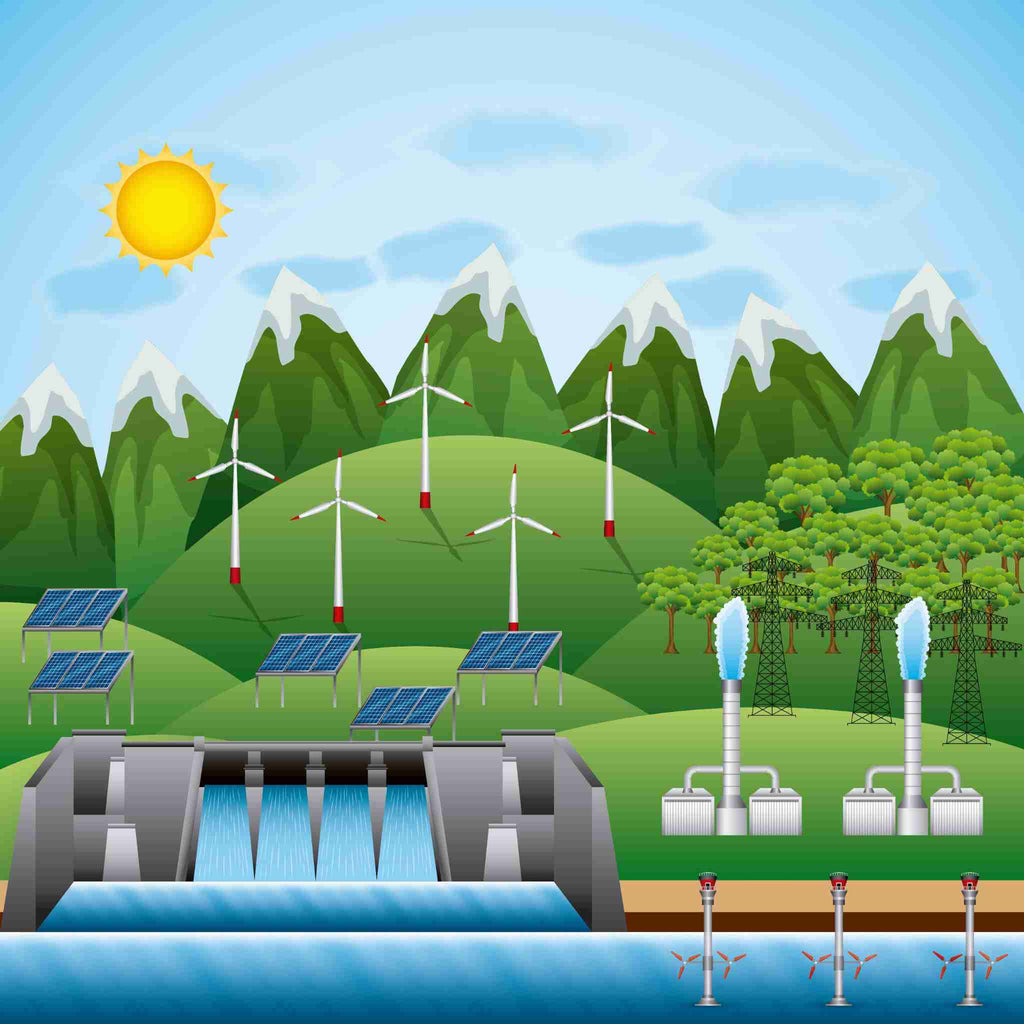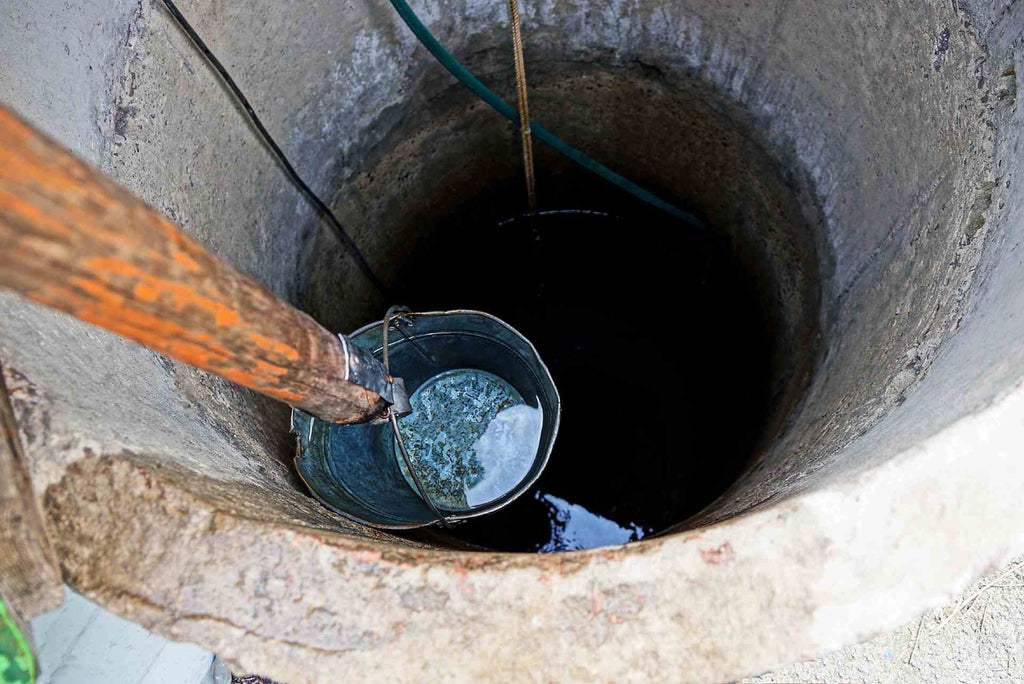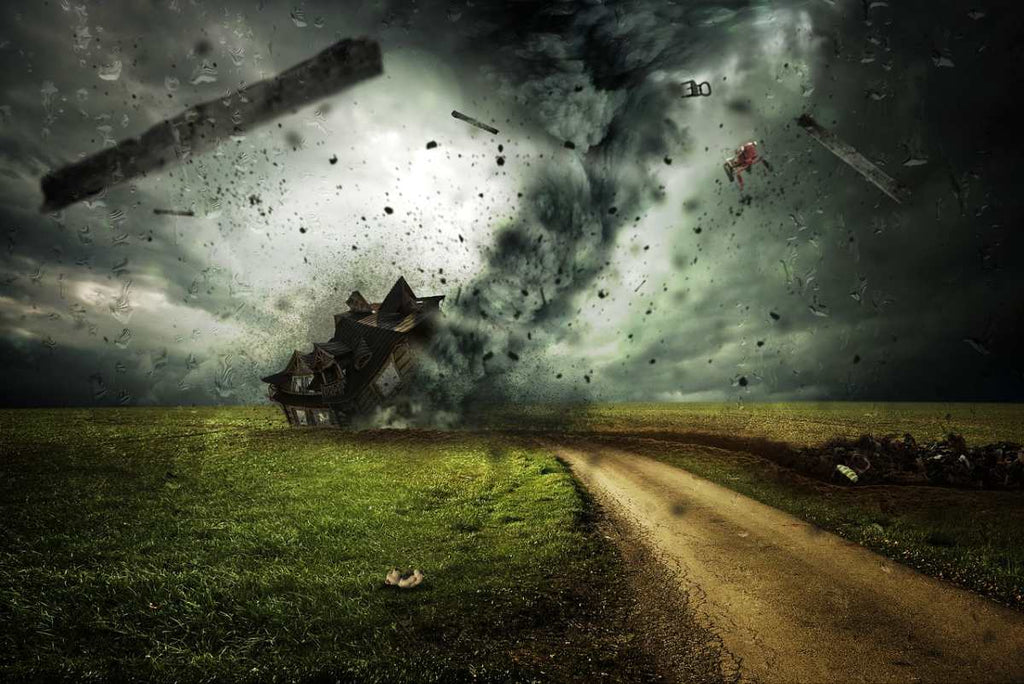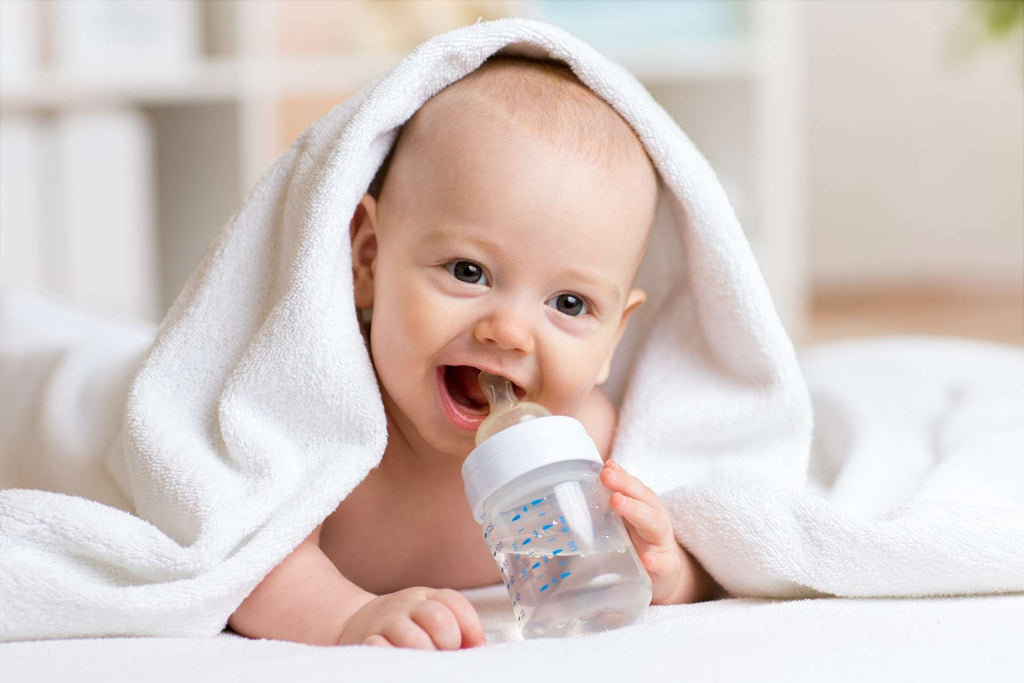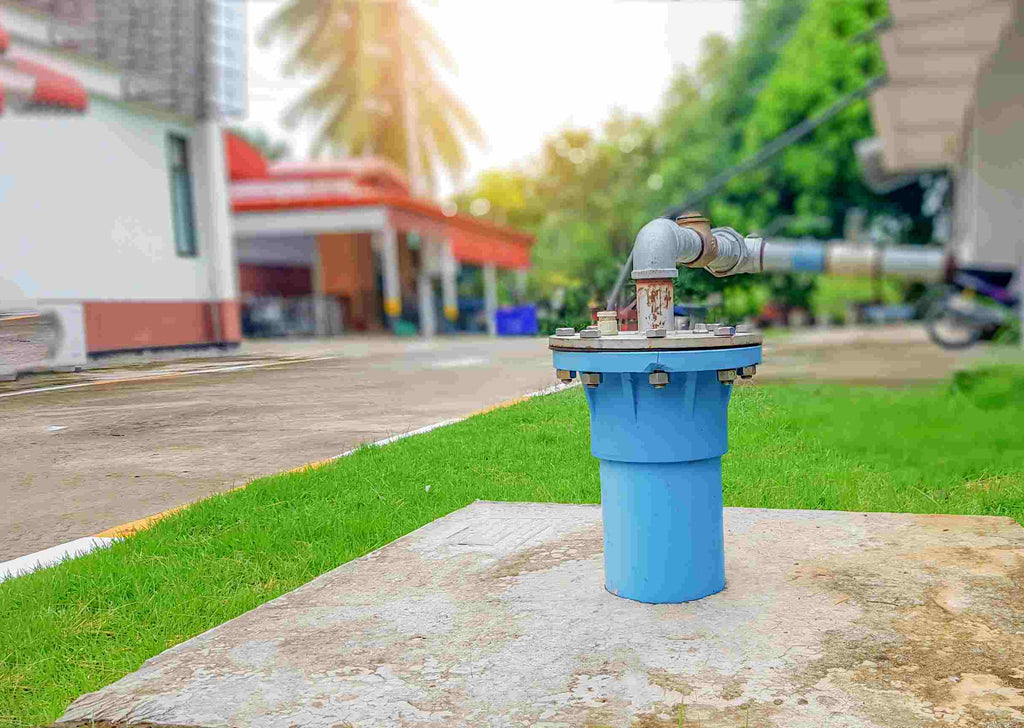All About Water - Water Quality, Water Filter, Water Resources and Issues
How To Stay Positive During Covid-19
The Covid-19 pandemic has seemingly taken people’s lives in a 180-degree turn. People are bombarded with feelings of anxiety, fear, and loneliness. A little uneasy or on edge during these trying times. It is a battle but one with an unseen opponent. Thus, this circumstance is a global pandemic right now. According to the data gathered by the Centers for Disease Control and Prevention (CDC) using the Household Pulse Survey, 36.1% of adult U.S. residents have shown symptoms of anxiety and depression that have been affected by the Coronavirus pandemic. The Statistics About one of...
Coronavirus COVID-19 and New Variants - Things You Should Know
Many unpredictable, devastating events happened as we entered the year 2020. An awakening outbreak of a respiratory illness caused by a new virus emerged in Wuhan City, Hubei Province of China. Public health experts worldwide are scrambling to detect, track, and contain this new coronavirus that appeared in Wuhan, China, toward the beginning of December 2019. The World Health Organization alerted several cases of pneumonia in the area, but the virus did not match previous coronaviruses, such as SARS and MERS. What Are Coronaviruses? Coronavirus is named for its...
The Healing Vibrations of Water and Structured Water
The power of water has been undeniably proven throughout the ages, from human needs to health. Water is a natural extension of the spiritual, and all water is susceptible to vibrations. Because of its healing vibrations, it can be an essential ingredient in spiritual practice. Researchers clarify three wonders of water: its memory, its exchange of information to DNA, and its positive characteristics. Indigenous people groups have consistently respected the sacred and healing forces of water. They realize that it can die whenever handled ineffectively. So, what is so mystical about water? The fact that it is life-supporting...
Should You Be Drinking Water Before Bed?
Water has consistently earned an important spot in our simple necessities in day-to-day living. All the more about the benefits it supplies in our system. Keeping hydrated is essential for health, yet many people don't drink enough water each day. We couldn’t stress enough how important staying hydrated is, as it is key to survival! Thus, we should be well-informed on how much water we should drink daily. Dehydration should not be underestimated because if it is, then it can cause serious complications to your kidneys, heart, and brain. Yet, knowing all the details on your daily...
How to Read You Annual Water Report
When your home’s water supply comes from a public water supply, you may notice an annual drinking water quality report along with your water bill. This report is essential for you to know your home’s drinking water safety. Here is everything you need to know about this report. Consumer Confidence Report Also called the “Water Quality Report,” it is information that rates the condition of your local drinking water quality. It contains the source of your drinking water, a list of contaminants present, potential health effects, contaminant levels in your CCR compared to national standards, and...
Is It Safe To Drink From Galvanized Pipes?
You can find the century’s old homes in some neighborhoods in your area. They are coveted by interested buyers because of their style, location, and charm. If you have lived in an older home for some years, you have done your fair share of remodeling your home.
Perhaps, you have put on a new roof, updated the color scheme, and refinished the floors. What about your home’s pipes? Is your home 40 years old and more? Forty years ago, galvanized pipes are a popular-choice with homebuilders. However, studies show that galvanized pipes can pose potential health risks to people. Because of their age, older homes are prone to have galvanized pipe in their plumbing system.
One of the major health risks of people in the United States is the presence of lead in drinking water. Indeed, the city’s water is generally safe. However, the plumbing system in the majority of the older buildings and historic homes pose potential health risks to the people.
Thus, in this article, we will discuss how lead can contaminate the water. In addition, we will discuss the risks of having galvanized pipes. Finally, we will also discuss the methods to prevent lead in our drinking water.
How Climate Change Affects on Public Health
Climate change now affects nature and brings about many human health consequences—environmental outcomes. For example, extreme heat waves, rising sea levels, changes in precipitation, flooding and droughts, intense hurricanes, and degraded air quality. Influence people's physical, social, and mental well-being directly and indirectly. Soon, in certain territories, the change will be intense. It is disastrous that local populations will be displaced and compelled to find new homes as natural evacuees. In a review published in the Annals of Global Health, experts caution against the looming public health emergency caused by climate change and call for action to help prepare...
HaloSan In The Drinking Water Of The City Of Denmark, South Carolina
What Wind and Solar Energy Can Help You Save
Humankind is constantly growing. The number of inhabitants on the planet rises each year. An ever-increasing number of people are using equally limited resources. And many people are sufficiently concerned about searching for a sustainable and renewable energy source. That will effectively fit into their lives. Introducing a renewable power source system on your property is perhaps the most ideal approach. To save on your power bills while reducing your impact on the earth. Frequently, your choice will be between solar-based energy and wind energy. In case you're a property owner gauging your renewable...
10 Drinks To Boost Your Immune System To Stay Healthy
As easy as protection against illnesses and diseases, the immune system works, but it is not as simple as it sounds. It has a complex system and cycles that ordinary people may not completely understand. Yet, its goal is to protect your body from harmful health risks. Our body produces its defense mechanism to fight any foreign matter that enters the body. However, it needs help to achieve optimal function, such as vitamins and minerals our body doesn’t typically produce. We get these through the foods and drinks we consume. Let’s examine the essential nutrients that contribute to boosting our...
Is Copper In Drinking Water Dangerous?
Copper is a metal and it occurs naturally on the Earth. It is considered a mineral found in soil and rocks. You can find it in the low levels of the natural bodies of water.
Copper contains an essential element. Indeed, your body needs a little amount of copper to stay healthy. However, having too much is harmful.
It is used to make various products such as plumbing systems. As such, it can get into your drinking water as it passes through the plumbing system inside your home. Where copper pipes corrode into the drinking water, it can soon affect the safety and quality of the water.
In this article, we will discuss how does copper gets into the drinking water. Also, we will discuss if it is dangerous to drink water with copper. Finally, we will talk about ways on how to prevent copper in the water.
What Is Turning The Oceans Into Acid?
Due to our abuse of natural resources such as fossil fuels, rampant deforestation, and changes in the land use, it has caused havoc on the oceans. Climate change has led to dangerous phenomenon around the world. It has also caused the release of carbon dioxide which lead to ocean acidification.
Ultimately, the oceans absorb the carbon dioxide found in the atmosphere. It plays an essential role in the climate regulation as it mitigate climate change. However, with the unprecedented amount of carbon dioxide created by the humans, it surpasses what our oceans can absorb. Thus, it changes ocean chemistry making it more acidic. In this article, we will understand further what is turning the oceans into acid.
What Is The pH Level Of Water? For Tap, Pure, And Filtered Drinking Water
Having a good pH balance plays a significant factor in your overall health, and this is generally agreed by doctors and scientists. The pH, or potential hydrogen level, in your body is influenced by the food and kind of drinks you consume. pH is the measurement of hydrogen ions concentration. This measurement is based on a scale that goes from 0 to 14. It is worth to take note of pH levels of seven (7) is the neutral level, under seven (<7) is the acidic and above seven (>7) is the alkaline. You may have encountered diet fads or special kinds of drinks claim to be having “high alkaline.” What does this mean and how does pH level has something to do with it?
In this article, we will discuss the pH level more. We will know the recommended pH level for tap, pure, and filtered drinking water. Furthermore, we will discuss the importance of pH in water and determine its difference with alkalinity.
What Is The Water-Energy Nexus? The Definition And Concept Explained
Water and energy are fundamental components of our 21st-century life, but they can no longer be considered separately. Just as producing energy consumes water, pumping, treating and distributing water requires energy. In other words, water is an energy issue; energy is a water issue. Called the water-energy nexus, this interrelationship is beginning to receive the attention it merits.
The resulting Report to Congress on the Interdependency of Energy and Water concluded that major changes in the generation, transmission, and distribution of energy might be needed in certain regions to address water issues.
The water-energy nexus can be considered from two main points of view: energy consumed to pump, treat and deliver water and water used to produce energy. Awareness of both perspectives is essential for resource management.
Nutrient Pollution-One of America’s Most Challenging Environmental Problems
Nutrient (aka nitrogen and phosphorus) pollution is one of America’s most widespread, costly and challenging environmental problems. It is caused by excess nitrogen and phosphorus in the air and water.
Nutrients are chemical elements that all living organisms—plants and animals—need to grow. When too much nitrogen and phosphorus enter the environment—usually from a wide range of human activities—the air and water can become polluted.
How Does Well Water Get Contaminated?
Groundwater contamination is due to our everyday activities. It becomes vulnerable, especially where the population density is high and the land use is intensive. In general, any type of activity which releases wastes or chemicals in the environment can potentially pollute the groundwater. Indeed, it is expensive and difficult to clean contaminated groundwater.
Before resolving how to address water pollution, it is best to understand first how ground and surface waters are related. You can manage and fully understood everything if you acknowledge the fact that it is interconnected. If a water supply is near to the source of contamination, then there is a risk. If there is a stream or river nearby, then the groundwater can have a chance to become polluted.
Hurricane Preparedness: What Are The Essential Things To Prepare
A hurricane can cause widespread devastation during and after it occurs. This guide designed to help you properly prepare for a hurricane and know how to protect yourself during and after one.
Planning and preparing can make a big difference in safety and resiliency in the wake of a hurricane. The ability to quickly recover following a hurricane requires a focus on preparedness, advance planning, and knowing what to do in the event of a hurricane.
Fluoride-Free Water For Babies : Is Fluoride Safe For Babies?
Fluoride is basically a compound that is naturally existing and very common to the environment. It is usually found in almost everywhere – water, soil, plants, rocks, and sometimes even in the air we breathe.
According to the aspects of Chemistry, the said chemical is the negative ion of fluorine that is usually bounded to an alkyl group. It is monoatomic and inorganic anion with salts that are usually colorless and odorless. Typically, the said salts have a very distinguishing taste caused by its bitterness.
Moreover, fluoride can also found in our bones and teeth. It is well known to help prevent and even regress the early development of dental decay. Scientists have studied and shown that the chemical asserts the oral health in two ways: when it is taken in, it helps the development of the teeth and makes it more durable and; when it is applied to the enamel or to the very surface of the teeth, it helps rebuild, remineralize, and strengthen the surface of the teeth. It also prevents the acid produced from bacteria that reside in tartars and plaques from demineralizing the enamels of the teeth.
In some ways, fluoride has increased its popularity for a lot of manufacturers. It has become the main medium in creating most dental products due to its oral health benefits. And since a lot of experts have proven its positive effects on people, companies such as Colgate and other big personalities encourage the community to use products with the standard amount of fluoride in order to improve their oral hygiene and oral health.
Furthermore, having good and strong teeth not only make the people boost their confidence and smile more, but also help the government save a portion in their budget that’s allotted for the allowance of the community’s health – instead of spending too much on the maintenance of the people’s oral health, they could just allocate the money on other things and help those who truly need it.
What Is Arsenic Poisoning? What Are The Effects Of Arsenic?
Arsenicosis or arsenic poisoning happens whenever a person has taken in a dangerous amount of arsenic. Arsenic is a natural chemical which can be found at groundwater at any parts of the world.
Intake can be through absorbing, swallowing, or inhaling arsenic.
If it is not treated immediately, arsenic poisoning can lead to major health issues and even death. Thus, precautions must be taken to prevent those who are at risk.
Arsenic is oftentimes associated with deliberate poisoning methods. But any person can be exposed to arsenic via contaminated groundwater, arsenic-preserved wood, rock, infected rock, or soil. Arsenic in the environment is not dangerous per se. It is rare to have toxic amounts of arsenic found in the environment.
There are reports that arsenic is found in some bottled water in the market. Thus, in this article, we will understand what arsenic poisoning and its effects on health. We will also talk about cases of arsenic in bottled water and the things we can do to prevent it from affecting our health.
How much Fluoride In Tap Water VS In Bottled Water

Since ancient times, water has been part of the necessities of all the living organisms occupying the Earth. This has then become a symbol that expresses purity and devotion. Because of its antiquity, some cultures, such as Greeks, have created gods that command and control the waters – their place of gatherings was located around the wells.
Yet, regardless of how people in various cultures would consider the importance of water, deep down, we know that we can’t live without it. From the environment we live into the very medium of our own body, we can always find water.
With 70% of the planet’s surface covered with water and 75% of the human body consisting of it, we could then say that water is one of the primary elements responsible for life here on Earth. Water moves through the land as it does through the human body; it transports, dissolves, replenishes the nutrients and other organic matter, and carries away the waste material.
For an average adult, their body contains an amount of 11 gallons of water - with just a loss of not less than 3/4 gallon, that person could suffer headaches, weakness, dizziness, nervousness, fatigue, irritability, dehydration, and even a certain level of pathology.
On the other hand, we can’t just keep on drinking random water to replenish our loss. We still have to consider the cleanliness and safeness of the water before being able to drink it. If a person consumes contaminated water, they might experience gastrointestinal problems, diarrhea, nausea, stomach cramping, dehydration, and even death, depending on how much they have drunk.
Thus, to ensure the safety of the drinking water, governments, especially the United States, have regulated laws where the sanitation of the water flowing through the pipes must be checked according to the set standards and criteria. Moreover, companies that produce clean drinking bottled water also became a trend and increased through time to have easier access to it.
Tap Water VS Bottled Water

Tap water and bottled water are two of the most common source of clean drinking water today. Although a lot of countries - such as Canada, New Zealand, Singapore, Colombia, Finland, Greenland, Iceland, and Denmark – have implemented the use of tap water as a source of the citizen’s drinking water, there are still several places where people don’t have reliable, clean tap water. And according to the study, there are 783 million people who choose to buy bottled water because these are more dependable than the water coming out of their faucets.
Tap water is the water coming out of our taps distributed by the local water provider through the indoor plumbing. This is commonly used by developed countries and is usually safe to drink, yet it is rare to experience water quality problems.
Because of the improper plumbing and lack of maintenance, waters coming out of the taps could be contaminated. This then could cause serious medical problems, especially to those people who might have consumed it. Thankfully, local governments have implemented laws and criteria to protect both the water and the citizens and have regularized check-ups and maintenance.
On the other hand, bottled water is the drinking water packaged through bottles – could be glass or plastic bottles. There are some bottled waters sold as carbonated and categorized as distilled, mineral, or spring. This has become a trend because it is easier to access and could sometimes be convenient, especially for those who like to travel.
Of course, although they may seem perfect, this bottled water does have its downside. Since these products are being imported to different parts of the world, they could also be unsafe due to improper packaging, storage temperature, and expiration. Moreover, since most companies have been selling these products in plastic bottles – since they are cheaper and more flexible than glass bottles – the amount of garbage produced each year has been increasing. This causes pollutions, specifically water and land pollutions, because plastics and glasses tend to have slow decomposition rates, thus causing space invasion to other living organisms.
Fluoride in Waters

Fluoride is a chemical usually added by local water providers to the municipal water supply to reduce the number of people having tooth decay. Commonly found in food, water, and soil, the chemical is one of the most abundant elements on the planet. It is one of the main media for making mouthwashes, toothpaste, and other more various products.
Since tooth decay is very common in children, local governments have decided to add fluoride in the water because studies have shown that the increase of fluoride level up to certain amounts – 0.7 to 1.2 milligrams - could prevent dental problem cases – the said material protects the teeth by remineralization and demineralization. This then saves the budget for the local community’s health allowance and benefits those who need them.
Furthermore, fluoride wasn’t just added to tap waters but also bottled waters. The Food and Drug Administration's Center for Food Safety and Applied Nutrition just recently announced that companies who manufacture bottled water can now add a certain amount of fluoride in their mixture and print it on their labels - since a lot of studies have positively shown the benefits of fluoride.
The famous company Colgate has agreed and supported this claim because they promote better oral health and intend to make people understand its importance.
However, having too much fluoride could also cause some hazards to people. Experts have found out that consuming fluoride for a long time then links to certain health issues. They have proved that the said chemical affects the durability of the person’s bones, specifically their teeth.
Examples of possible health cases are dental fluorosis, skeletal fluorosis, thyroid problems, and neurological problems.
Dental Fluorosis

Dental fluorosis was caused by too much exposure to fluoride. Cases like this were seen on people who have been consuming fluoride since their childhood when their teeth were developing. A symptom of this is having tiny white specks or streaks located in the enamel of the tooth.
Although this doesn’t affect the health of the teeth, it would just cause some discoloration to them. Due to this, doctors have recommended not letting their children intake too much water with fluoride, do not let them use mouthwash, and supervise them when brushing their teeth.
For infants, it is advised to let their mothers breastfeed them because this doesn’t just make the babies strong but also protects them from fluorosis.
Skeletal fluorosis

Another case caused by being exposed too much to fluoride is skeletal fluorosis. Similar to what happens to the teeth, fluoride could cause breakage and damage to the bones and joints. Through time, the bones could harden and become less elastic, causing an increase in the probability of having fractures. Moreover, if the bone tissue accumulates and the bones thicken, the person may not move easily caused by impaired joint.
Thyroid problems

In some cases, people tend to experience having thyroid problems caused by excess fluoride; specifically, this could cause damage to the person’s parathyroid gland. If not immediately treated, this could result in hyperparathyroidism – uncontrolled secretion of the parathyroid hormones – and depletion of the calcium in the bone structures, causing higher blood concentrations in the blood.
Furthermore, having a low amount of calcium concentrations in the person’s bones could them more vulnerable to fractures.
Neurological problems

Some studies prove that people who have consumed fluoride before their birth could be at great risk of having poorer cognitive outcomes.
Experts have long-term studied women who were pregnant together with the amount of fluoride they consume. After 6 to 12 years, it was found out that the children of this said woman tend to have lower scores on IQ tests. This then made the experts theorized that fluoride could indeed be hazardous to children’s development.
Also, fluoride could contribute to many health problems, according to the International Association of Oral Medicine and Toxicology (IAOMT). This organization imposes not to use or add fluoride in the water or any other products.
Such examples of their findings to people are skin problems, cardiovascular problems, high blood pressure, cardiac insufficiency, myocardial damage, heart failure, reproductive issues, thyroid dysfunction, osteoarthritis, temporomandibular joint disorder, bone cancer, and ADHD.
Recommended Solutions to Fluoride
Due to the complaints and negative results of fluoride consumption, the United States Food and Drug Administration (FDA) proposed to revise the standards for the quality of bottled water and tap water.
They have announced that local water supplier and bottled water manufacturers should only limit their fluoride levels up to 0.7 milligrams per liter. Based on the findings in the experiment conducted by the experts from FDA, they have found that tooth decay would be prevented. At the same time, the risk of having dental fluorosis is lower if the concentration of fluoride on the water only ranges from fluoride to these levels.
Now, new standards and criteria are being recommended, and confusion regarding the inconsistent fluoride levels in the bottled waters have been corrected according to the updates announced by the United States Public Health Service (PHS).
Many manufacturers are now implementing this said regulation. Many still argue regarding the allowable levels because even in this low numerical value, the risk of having a health problem is still probable. Some scientist has contradicted the FDA and stated that although the proposed concentration of fluoride in the water is low, in long term period this toxicity from the said chemical would still accumulate in a person’s body causing the same certain health problems.
They have been imposing to decrease the amount of fluoride – lower than the recommended 0.7 milligrams per liter – being concentrated in the water because the risk of a certain person experiencing fluoride poisoning is still high.
Fluoride poisoning isn’t just caused by unexpected consumption of a huge amount of fluoride but also caused by an acute amount of it. Symptoms of this said case are seizures and muscle spasms, nausea and vomiting, excessive saliva, and abdominal pain. And if this poisoning won’t be treated immediately, this would then develop into some major health problems and even cause death.
These “anti” experts have said that each person has different levels of fluoride tolerance. The levels being blended in the water should consider those who have a lower tolerance than the average.
If these said persons consumed water having 0.7 milligrams per liter amount of fluoride, they would be more likely to have oral health issues and other medical problems. However, it is true that the number of casualties having dental problems lowered, there is still a small percentage left to take care of.
Thus to fill that percentage, these “anti” persons proposed to the FDA to lower the amount of fluoride.
Although there are no updates regarding this debate, this major decision still depends on the people; on how clean their water must be. Citizens are now advised to check every label of their bottled waters and ask for reports regarding the updates in their tap waters.
If, for some instances, a person in the family happened to experience some of the said symptoms – may it be acute or not - it is recommended to check on a physician or a doctor so that major complications would be avoided.
Also, do not hesitate to ask for advice from the experts, especially if you have doubts regarding your health and your water supply. Looking for the perfect water for your family would be better, especially when each one of you has health cases to consider.
Since water is a part of our lives and is necessary, it is better to make sure that it is safe and clean before consuming it.

